Every gardener faces the same frustrating battle of unwanted plants taking over their carefully planned spaces.
But here’s what most people don’t realize: those “weeds” aren’t necessarily bad plants. They’re simply growing in the wrong place at the wrong time.
A dandelion might ruin your perfect lawn, but it could be welcome in a wildflower meadow.
The key to winning this battle lies in knowing your opponent. When you can quickly identify which weeds you’re dealing with, you can choose the most effective removal method and save yourself hours of wasted effort.
We’ve put together this complete guide to the most common garden weeds you’ll encounter.
You’ll learn how to spot each one, understand where they prefer to grow, and find the best ways to control them before they take over your garden.
What Defines a Garden Weed?
A garden weed is any plant that grows where you don’t want it to grow.
This simple definition captures the truth about weeds – they’re not inherently bad plants, just plants in the wrong place at the wrong time.
What makes this definition so practical is that it puts you in control of deciding what belongs in your garden space. A dandelion might be a weed in your pristine lawn, but a welcome addition to a wildflower garden.
Key characteristics that define garden weeds:
- Unwanted location – Growing in flower beds, vegetable gardens, or lawn areas where they compete with desired plants.
- Fast growth rate – Most weeds grow quickly and spread rapidly through seeds, roots, or runners.
- Strong survival skills – They adapt well to different soil conditions and weather patterns.
- Resource competition – Weeds steal water, nutrients, and sunlight from your chosen plants.
- Persistent nature – They return year after year, often becoming harder to control over time.
The same plant can be a beautiful wildflower in a meadow but a troublesome weed in your tomato patch. Context matters most when defining what makes a plant a weed in your garden.
Now that you understand what makes a plant a weed, let’s look at the most common types you’ll encounter in your garden and how to identify each one.
23 Kinds of Garden Weeds
Now that you understand what makes a plant a weed, let’s look at the most common types you’ll encounter in your garden and how to identify each one.
1. Dandelion
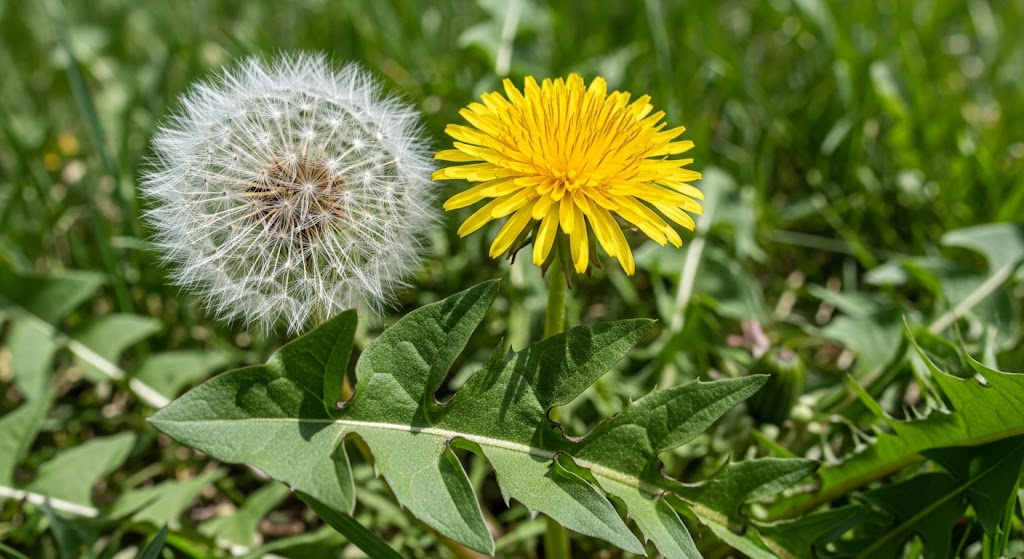
These bright yellow flowers turn into white seed heads that spread easily. Common in lawns and garden beds during the spring and fall seasons.
- Type: Perennial broadleaf
- Size: 6-12 inches tall
- Where It Grows: Lawns, garden beds, sidewalk cracks
- Appearance: Yellow flowers, deeply notched leaves, white seed heads
- Control: Hand pulling, herbicides, regular mowing
2. Crabgrass
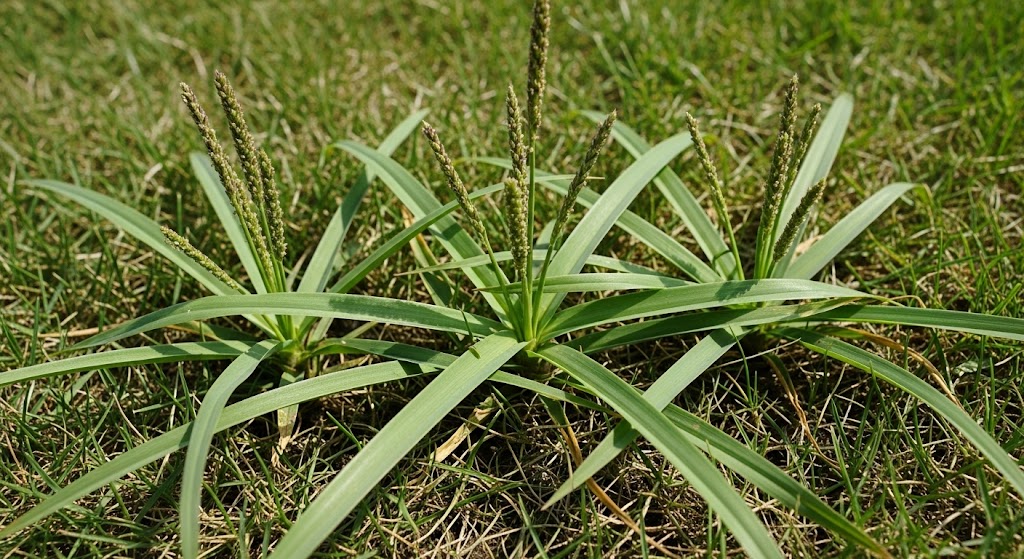
Low-growing grass that spreads quickly in thin lawn areas. Forms dense mats that crowd out desired grass during hot summer months.
- Type: Annual grass
- Size: 1-3 inches tall, spreads 2 feet wide
- Where It Grows: Thin lawns, bare soil, garden edges
- Appearance: Light green, finger-like seed heads, low spreading habit
- Control: Pre-emergent herbicides, thick lawn maintenance, hand removal
3. Clover
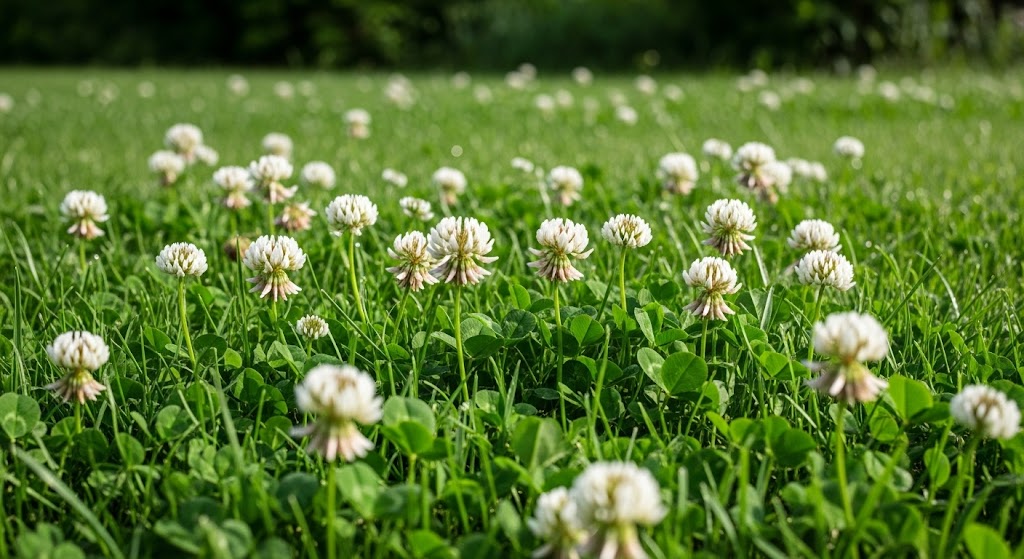
Small white or pink flowers with three-leaf clusters. Often appears in nitrogen-poor lawns where it can actually improve soil health.
- Type: Perennial legume
- Size: 2-6 inches tall
- Where It Grows: Lawns, garden borders, fields
- Appearance: Three-leaf clusters, small white/pink flowers, creeping stems
- Control: Nitrogen fertilizer, selective herbicides, overseeding lawn
4. Plantain
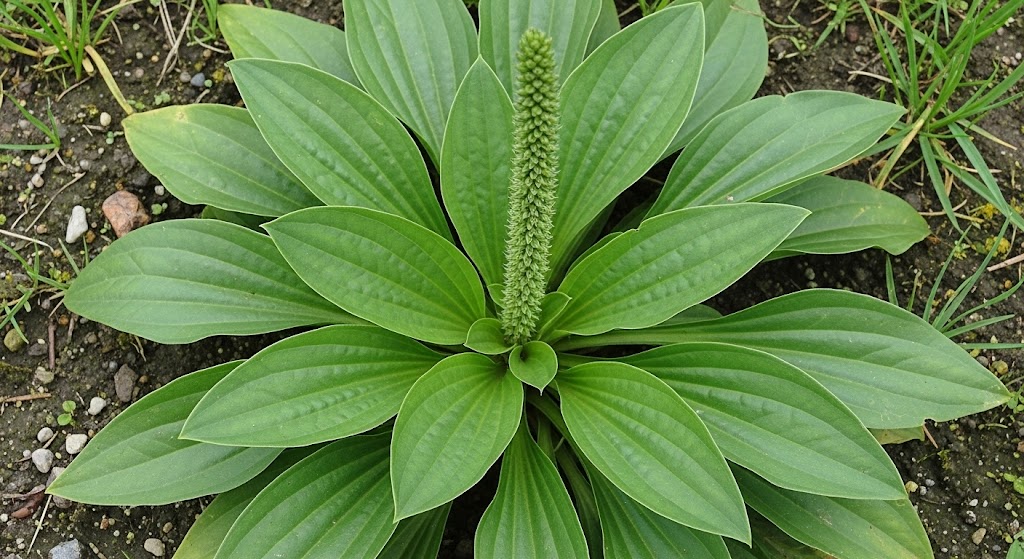
Broad, ribbed leaves form rosettes close to ground. Produces tall spikes with small seeds that stick to shoes and clothing.
- Type: Perennial broadleaf
- Size: 4-8 inches tall and wide
- Where It Grows: Compacted soil, walkways, lawn edges
- Appearance: Ribbed oval leaves, tall seed spikes, ground-hugging rosette
- Control: Soil aeration, hand digging, broadleaf herbicides
5. Chickweed
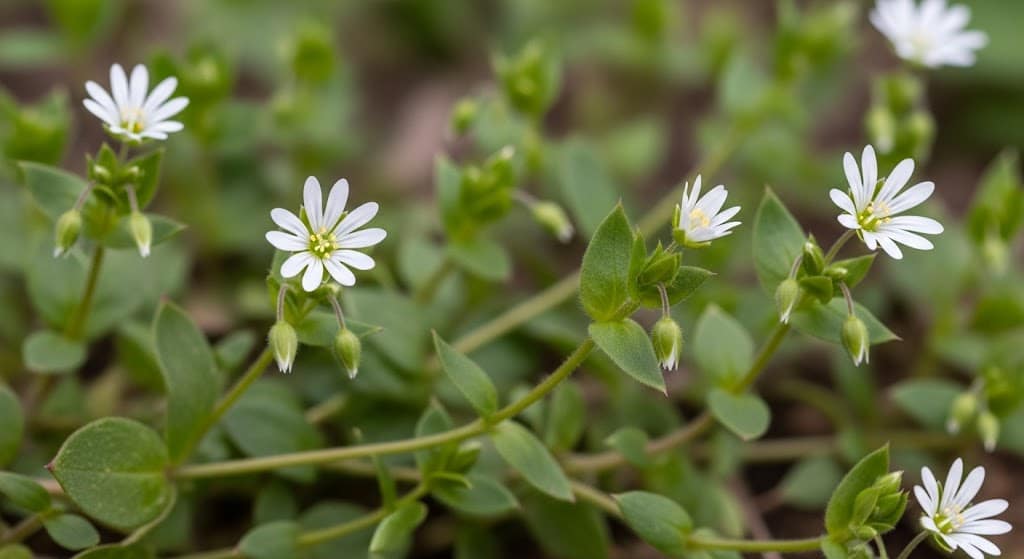
Small white star-shaped flowers on sprawling stems. Thrives in cool, moist conditions and can grow year-round in mild climates.
- Type: Annual broadleaf
- Size: 2-4 inches tall, spreads widely
- Where It Grows: Shaded areas, moist soil, garden beds
- Appearance: Small white flowers, oval leaves, trailing stems
- Control: Mulching, hand pulling, improved drainage
6. Purslane
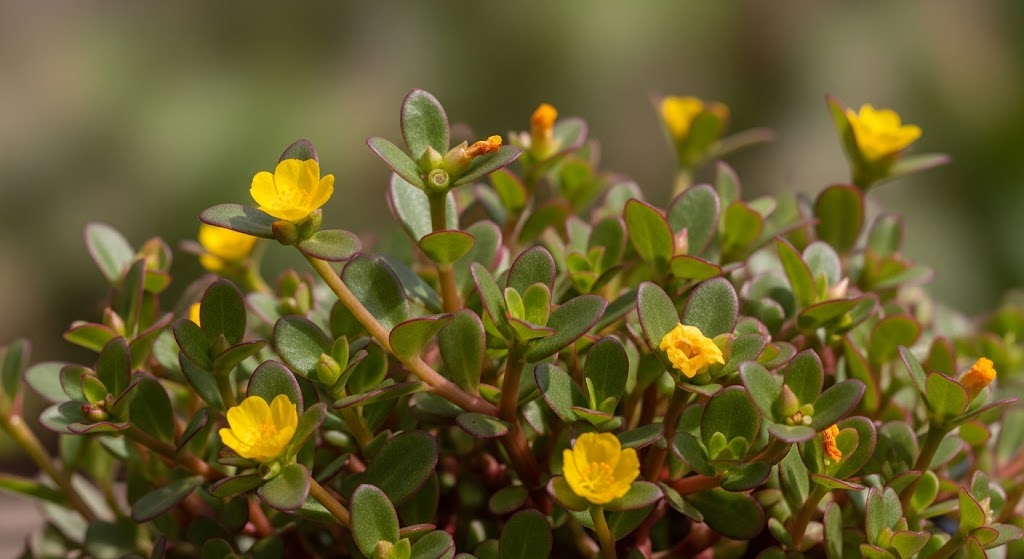
Thick, succulent leaves on reddish stems. Spreads quickly in hot weather and produces tiny yellow flowers that self-seed readily.
- Type: Annual succulent
- Size: 1-2 inches tall, spreads 12 inches
- Where It Grows: Vegetable gardens, sidewalk cracks, disturbed soil
- Appearance: Thick paddle-shaped leaves, reddish stems, yellow flowers
- Control: Hand pulling before flowering, mulching, cultivation
7. Lamb’s Quarters
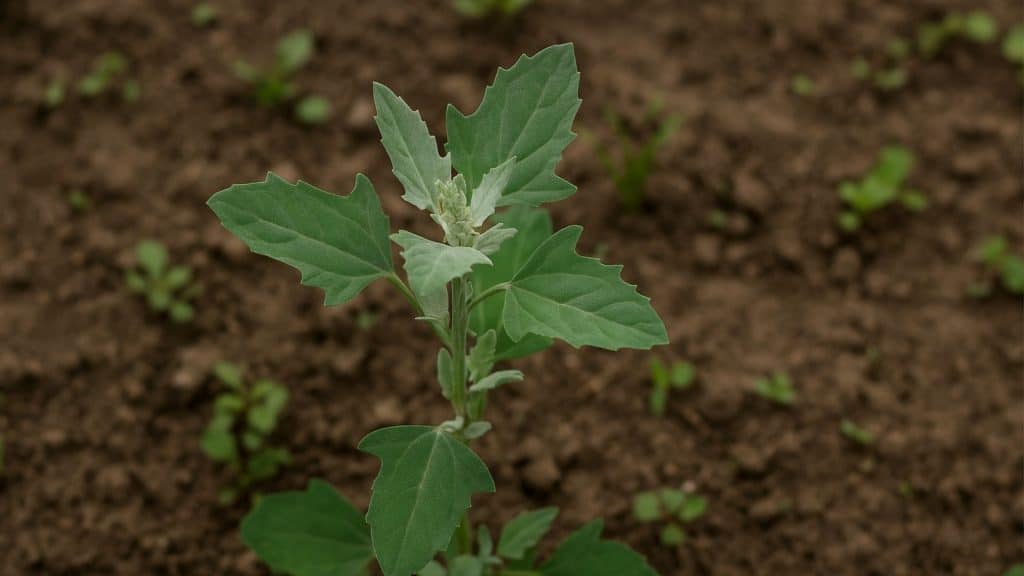
Tall, upright stems with diamond-shaped leaves. Young leaves are edible, but mature plants compete heavily with vegetables for nutrients.
- Type: Annual broadleaf
- Size: 2-6 feet tall
- Where It Grows: Vegetable gardens, compost areas, rich soil
- Appearance: Diamond-shaped leaves, tall branched stems, small green flower clusters
- Control: Hand pulling, cultivation, pre-emergent mulch
8. Pigweed (Amaranth)

Fast-growing, upright plant with oval leaves. Produces dense clusters of small seeds that can germinate for many years afterward.
- Type: Annual broadleaf
- Size: 1-6 feet tall
- Where It Grows: Disturbed soil, gardens, field edges
- Appearance: Oval leaves, upright branched stems, dense seed clusters
- Control: Early cultivation, hand removal, competitive planting
9. Quackgrass
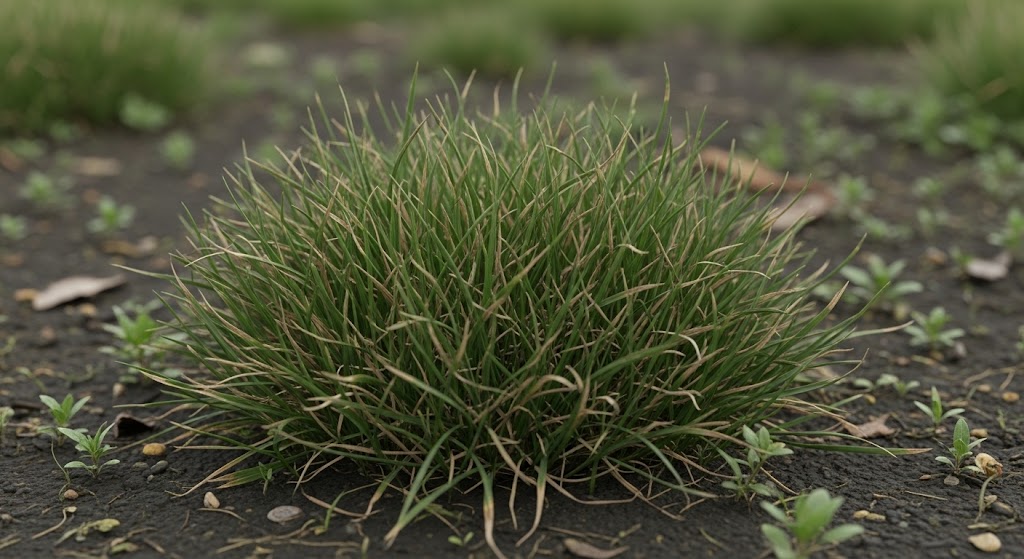
Persistent grass with underground runners. Spreads rapidly through rhizomes and is difficult to eliminate once established in garden areas.
- Type: Perennial grass
- Size: 1-3 feet tall
- Where It Grows: Garden beds, lawn edges, disturbed areas
- Appearance: Coarse grass blades, seed heads like wheat, spreading rhizomes
- Control: Smothering with cardboard, systemic herbicides, repeated cultivation
10. Bindweed
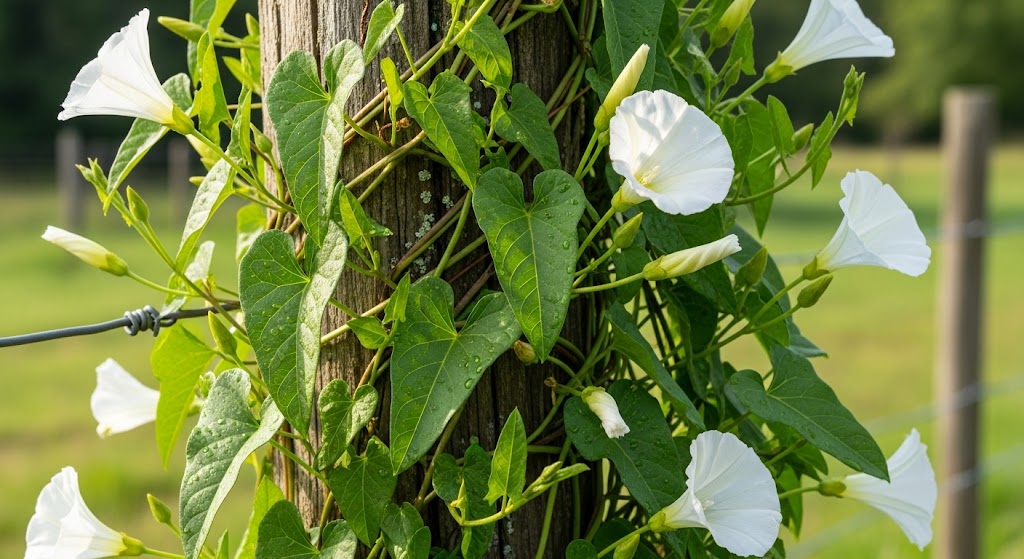
Climbing vine with white trumpet flowers. Wraps around plants and structures while deep roots make it extremely difficult to remove.
- Type: Perennial vine
- Size: Climbs 3-10 feet
- Where It Grows: Fence lines, garden borders, neglected areas
- Appearance: Heart-shaped leaves, white trumpet flowers, twining stems
- Control: Persistent cutting, root removal, systemic herbicides
11. Canada Thistle
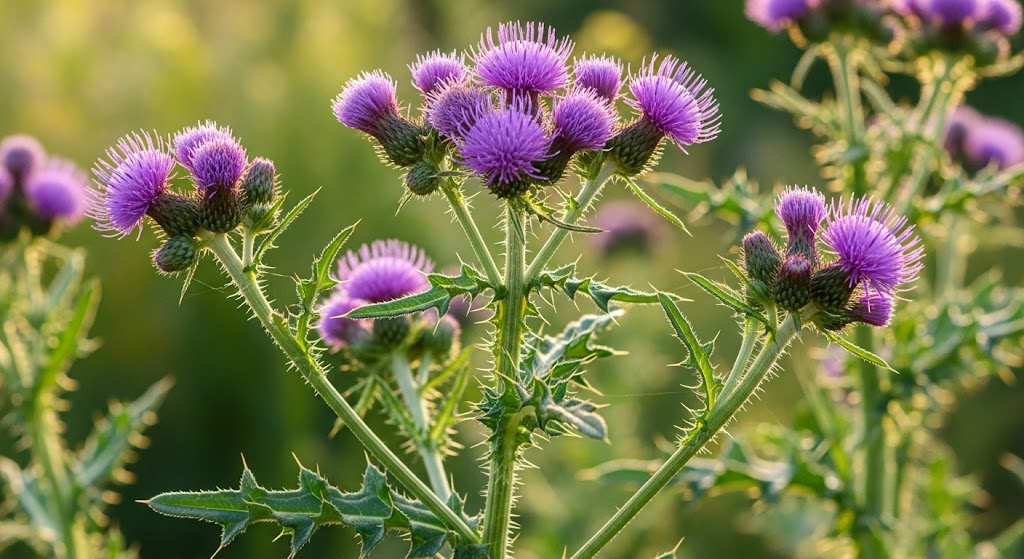
Spiny leaves and purple flower heads. Spreads through underground roots and windborne seeds, forming dense colonies over time.
- Type: Perennial broadleaf
- Size: 2-4 feet tall
- Where It Grows: Fields, garden edges, disturbed soil
- Appearance: Spiny leaves, purple flower heads, upright branched stems
- Control: Repeated cutting, root removal, targeted herbicides
12. Ground Ivy
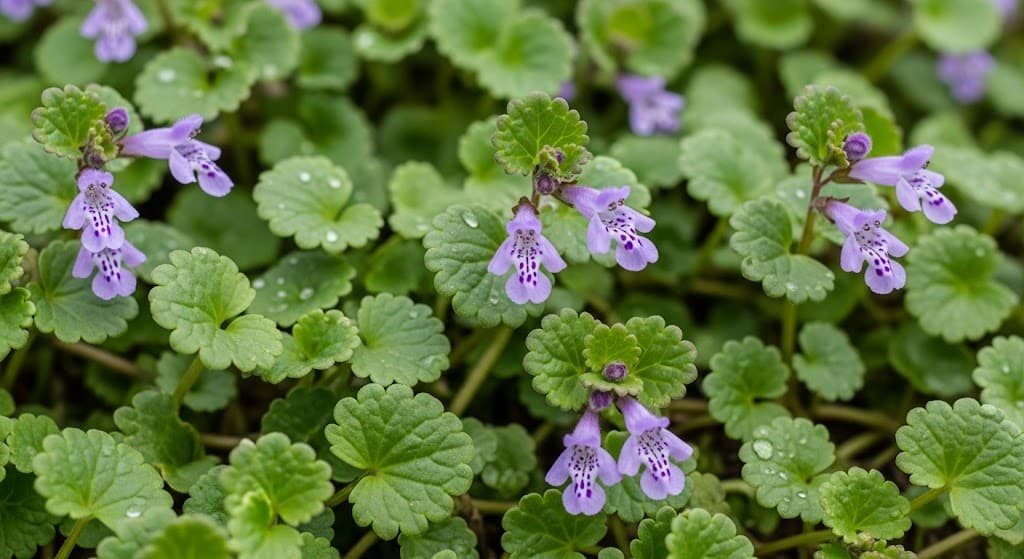
Low creeping plant with round scalloped leaves. Forms dense mats in shaded areas and produces small purple flowers.
- Type: Perennial broadleaf
- Size: 2-4 inches tall, spreads widely
- Where It Grows: Shaded lawns, under trees, moist areas
- Appearance: Round scalloped leaves, purple flowers, creeping stems
- Control: Improved lawn density, selective herbicides, hand removal
13. Oxalis (Wood Sorrel)
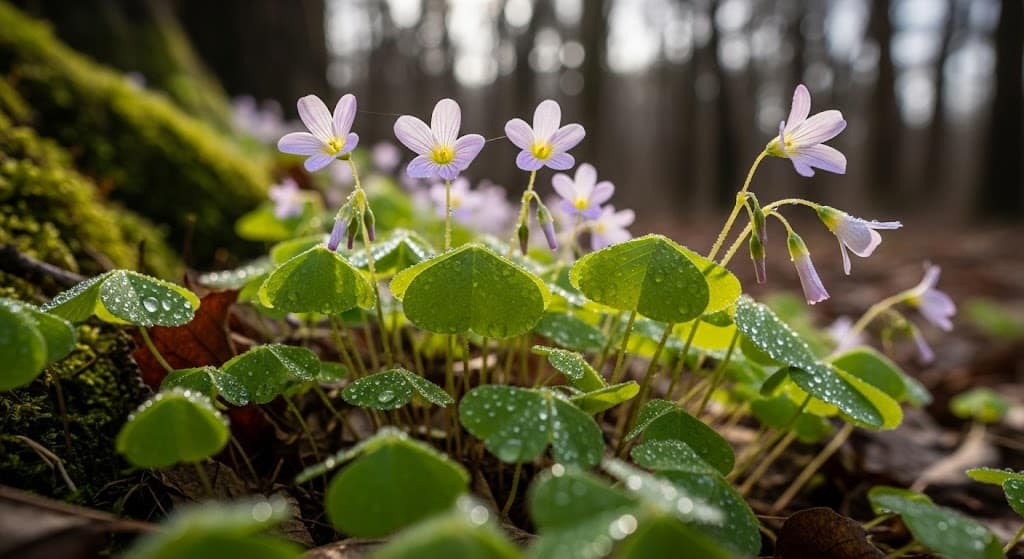
Heart-shaped three-leaf clusters with yellow flowers. Seeds explode from pods when touched, spreading quickly throughout garden beds.
- Type: Annual/perennial broadleaf
- Size: 3-6 inches tall
- Where It Grows: Garden beds, containers, shaded areas
- Appearance: Three heart-shaped leaflets, yellow flowers, explosive seed pods
- Control: Hand pulling before seeding, mulching, pre-emergent herbicides
14. Spurge
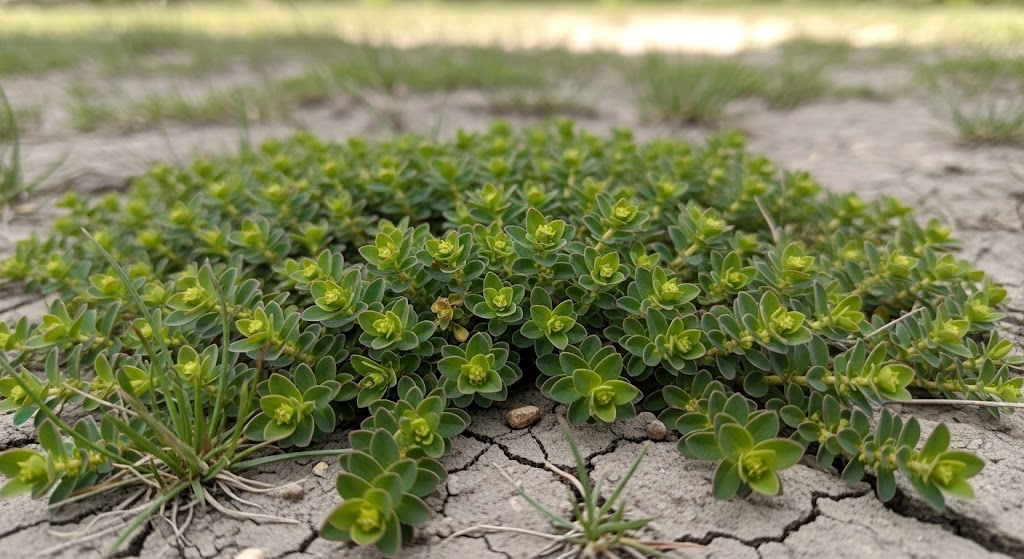
Low mat-forming plant with small oval leaves. Produces milky sap that can irritate skin and spreads rapidly in hot weather.
- Type: Annual broadleaf
- Size: 1-2 inches tall, spreads 12 inches
- Where It Grows: Sidewalk cracks, thin lawns, dry areas
- Appearance: Small oval leaves, milky sap, tiny flowers, prostrate growth
- Control: Hand pulling with gloves, pre-emergent herbicides, thick lawn maintenance
15. Violets
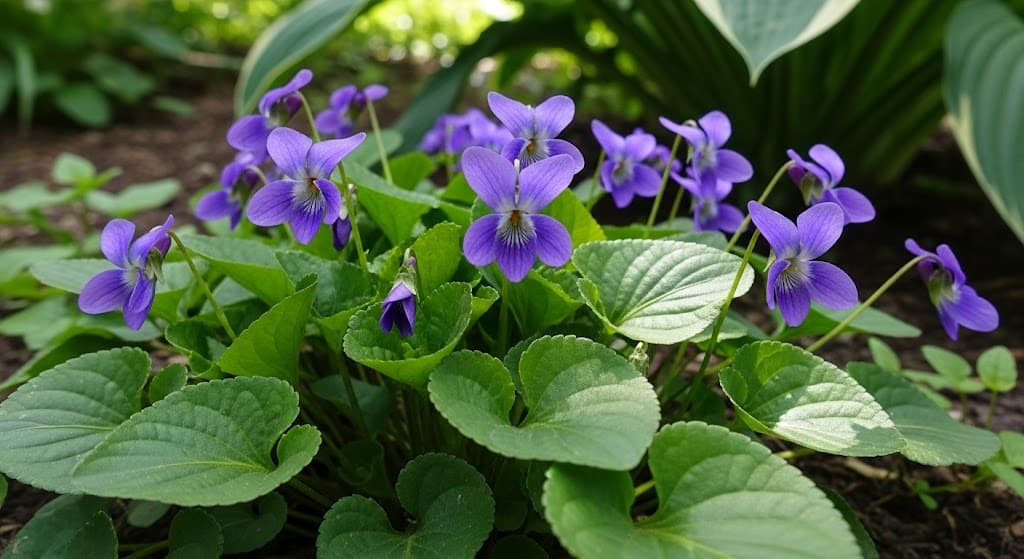
Heart-shaped leaves with purple or white flowers. Spreads through runners and self-seeding, often considered ornamental but can be invasive.
- Type: Perennial broadleaf
- Size: 3-6 inches tall
- Where It Grows: Shaded lawns, woodland gardens, moist areas
- Appearance: Heart-shaped leaves, purple/white flowers, low rosette growth
- Control: Hand digging, selective herbicides, lawn overseeding
16. Henbit
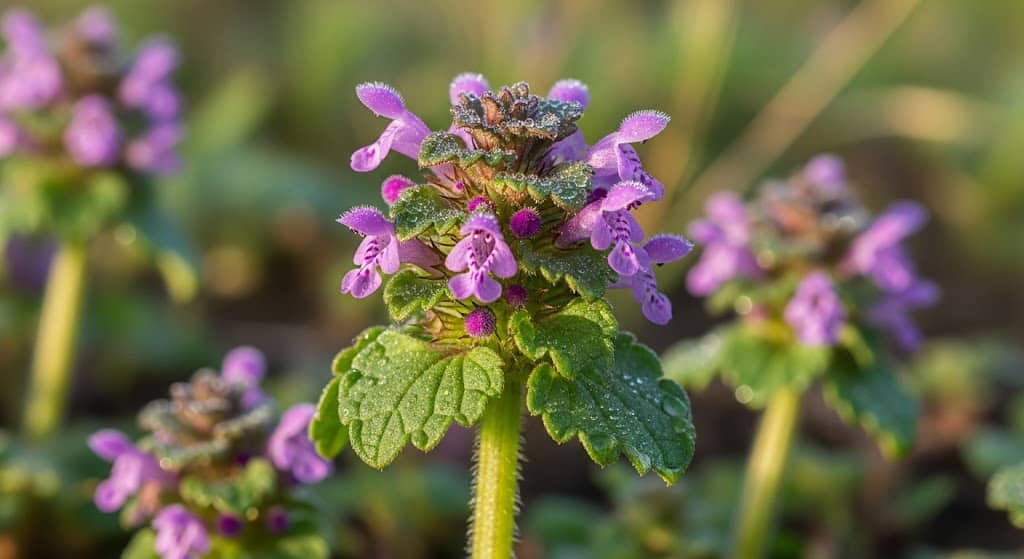
Square stems with rounded, toothed leaves. Purple flowers appear in early spring and plants often grow in dense patches.
- Type: Annual broadleaf
- Size: 4-8 inches tall
- Where It Grows: Thin lawns, garden beds, disturbed soil
- Appearance: Square stems, rounded toothed leaves, purple flowers
- Control: Hand pulling, pre-emergent herbicides, thick lawn maintenance
17. Shepherd’s Purse

Rosette of lobed leaves with white flowers. Produces distinctive heart-shaped seed pods that contain numerous tiny seeds.
- Type: Annual broadleaf
- Size: 6-18 inches tall
- Where It Grows: Garden beds, lawns, disturbed soil
- Appearance: Lobed basal leaves, white flowers, heart-shaped seed pods
- Control: Hand pulling before seeding, cultivation, mulching
18. Creeping Charlie
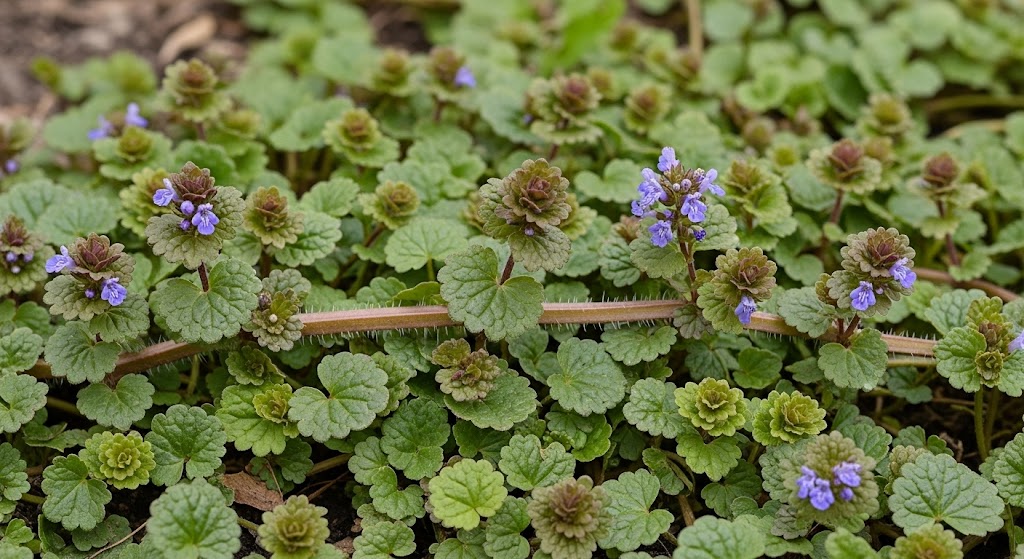
Round, scalloped leaves with purple flowers. Spreads rapidly through runners in shaded, moist areas where grass struggles to grow.
- Type: Perennial broadleaf
- Size: 2-4 inches tall, spreads indefinitely
- Where It Grows: Shaded lawns, under trees, moist areas
- Appearance: Round scalloped leaves, purple flowers, square creeping stems
- Control: Improved drainage, selective herbicides, lawn renovation
19. Nutsedge
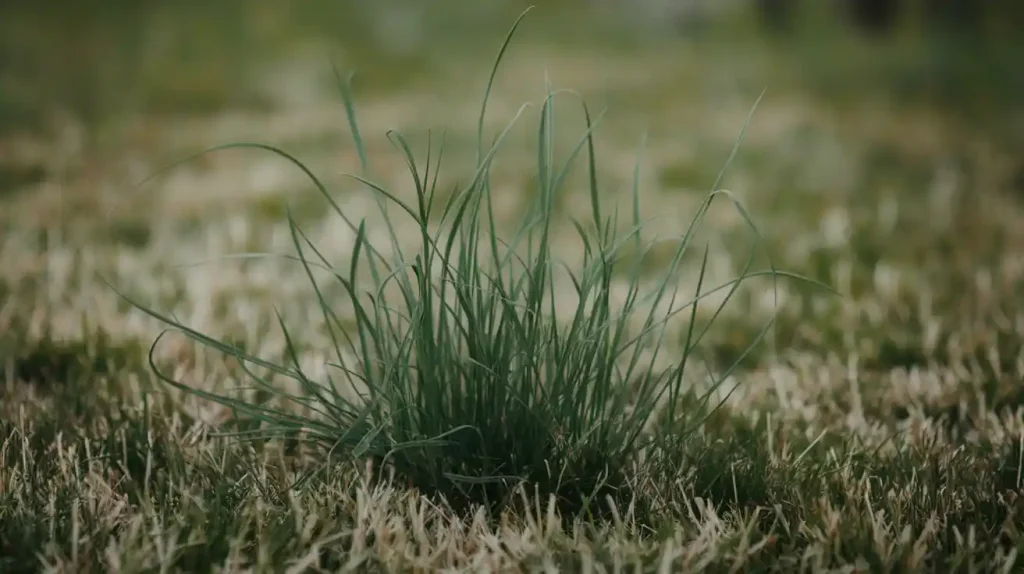
Grass-like appearance, but triangular stems. Grows faster than lawn grass and produces underground tubers that are difficult to eliminate.
- Type: Perennial sedge
- Size: 8-24 inches tall
- Where It Grows: Wet areas, poorly drained lawns, garden beds
- Appearance: Triangular stems, yellowish-green color, grows in clumps
- Control: Improved drainage, selective sedge herbicides, hand digging with tubers
20. Foxtail
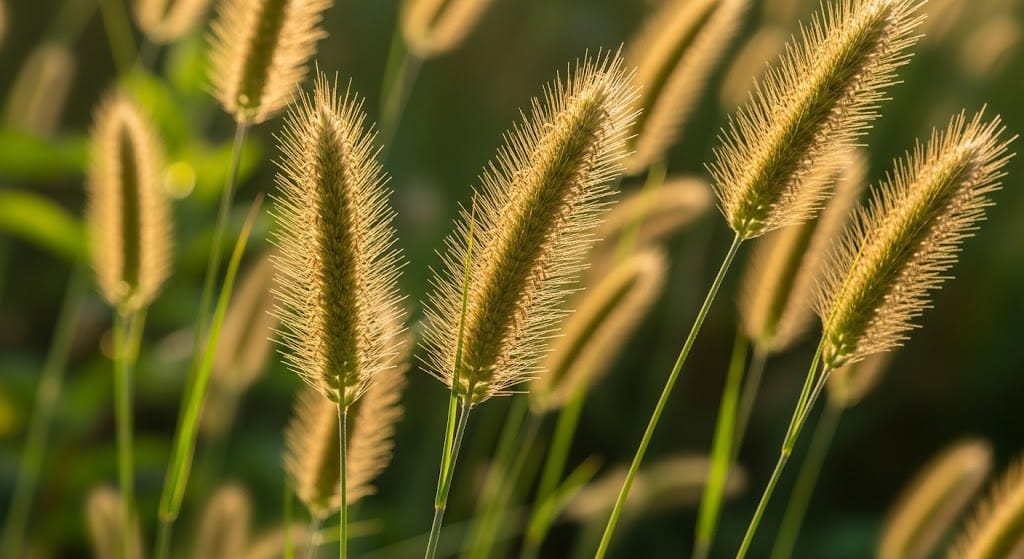
Fuzzy, bottle-brush seed heads on grass stems. Annual grass that germinates in warm weather and competes with lawn and garden plants.
- Type: Annual grass
- Size: 1-3 feet tall
- Where It Grows: Disturbed soil, thin lawns, garden edges
- Appearance: Fuzzy cylindrical seed heads, narrow grass blades
- Control: Pre-emergent herbicides, hand pulling, thick lawn maintenance
21. Knotweed
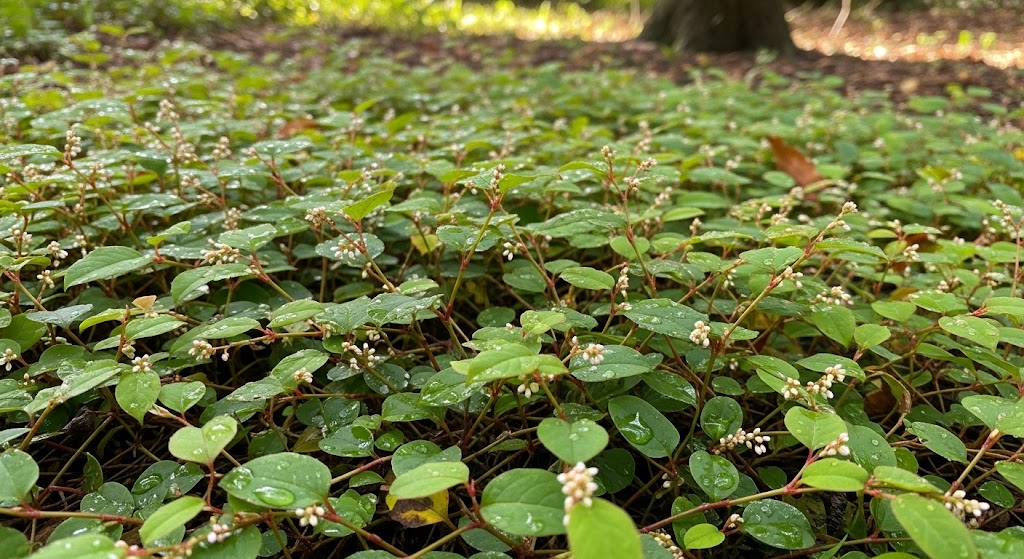
Low-growing with small oval leaves on wiry stems. Forms dense mats in compacted soil and produces tiny white or pink flowers.
- Type: Annual broadleaf
- Size: 1-2 inches tall, spreads widely
- Where It Grows: Compacted soil, walkways, driveways
- Appearance: Small oval leaves, wiry stems, tiny white/pink flowers
- Control: Soil aeration, hand removal, improved soil conditions
22. Mallow
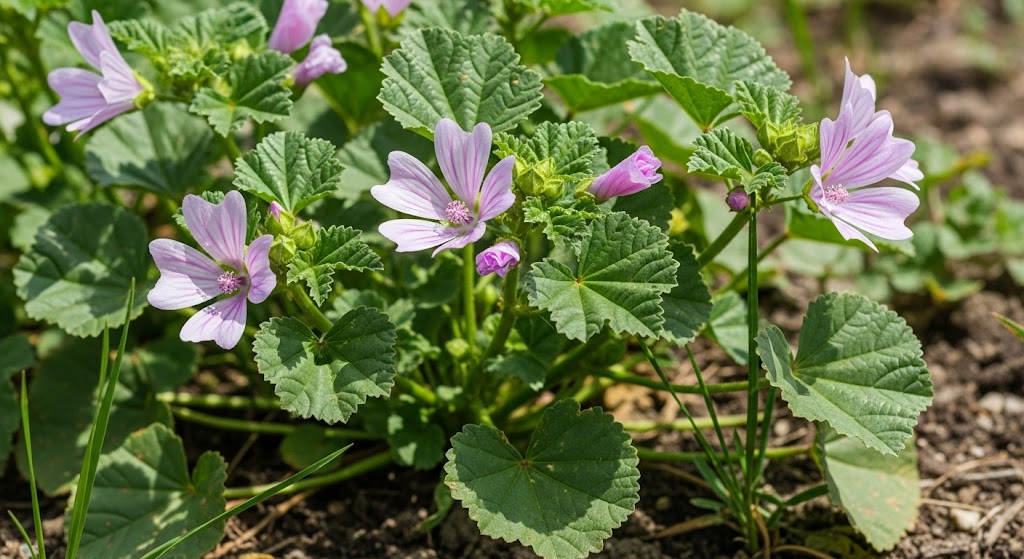
Round, lobed leaves with pink or white flowers. Deep taproot makes it drought-tolerant but difficult to remove once established.
- Type: Annual/perennial broadleaf
- Size: 6-24 inches tall
- Where It Grows: Garden beds, lawn edges, disturbed areas
- Appearance: Round lobed leaves, pink/white flowers, upright or sprawling growth
- Control: Deep hand digging, mulching, repeated cutting
23. Goosegrass
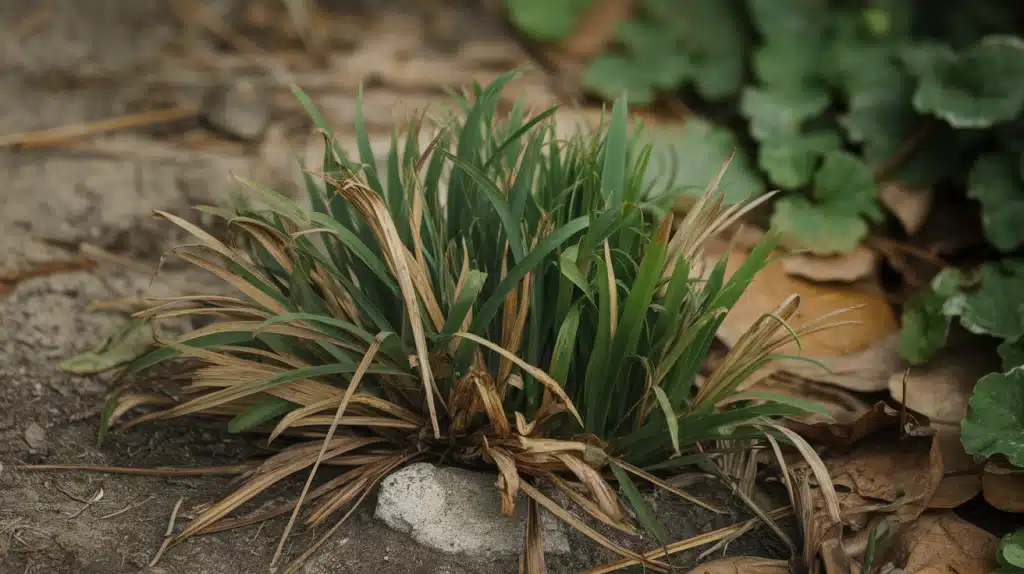
Coarse grass that forms distinctive star-shaped patterns. Thrives in compacted soil and produces seed heads that spread easily on shoes.
- Type: Annual grass
- Size: 2-6 inches tall, spreads in circles
- Where It Grows: Compacted areas, walkways, thin lawns
- Appearance: Coarse texture, star-shaped growth pattern, finger-like seed heads
- Control: Soil aeration, pre-emergent herbicides, and thick lawn maintenance
These weeds represent the most common garden invaders you’ll face as a gardener. Learning to identify them early makes removal much easier and helps protect your desired plants from unwanted competition.
Tips to Prevent Garden Weeds
Prevention is always easier than removal when it comes to garden weeds. These six proven strategies will help you stop weeds before they become a problem in your garden.
- Apply a Thick Mulch Layer: Spread 2-3 inches of organic mulch around plants to block sunlight and prevent weed seeds from germinating in the soil.
- Plant Dense Ground Cover: Fill empty spaces with desired plants or ground cover to compete with weeds for nutrients, water, and growing space.
- Use Pre-Emergent Herbicides: Apply pre-emergent treatments in early spring before weed seeds germinate to create a barrier that stops growth effectively.
- Water Plants Directly: Use drip irrigation or soaker hoses to water only your desired plants, keeping the surrounding soil dry for weeds.
- Maintain Healthy Soil: Test and improve soil with compost and proper pH levels to help wanted plants grow stronger than weeds.
- Remove Weeds Early: Pull small weeds immediately after rain when soil is soft, before they establish deep roots or produce seeds.
Combining these prevention methods creates multiple barriers against weeds. Start with one or two techniques and gradually add more as you build a weed-free garden maintenance routine.
Conclusion
Managing garden weeds becomes much simpler when you know what you’re dealing with.
These common weeds each have specific weaknesses that make removal easier once you understand their growth patterns and preferred conditions.
Remember, the most effective weed control combines multiple approaches. Hand pulling works best for annual weeds, while perennial weeds need more persistent treatment.
Prevention through thick mulch, healthy soil, and dense planting saves you hours of removal work later.
Your garden doesn’t have to be a constant battle against unwanted plants. With proper identification skills and the right control methods, you can maintain the beautiful, weed-free space you want.
Ready to put this knowledge into practice?
Start by walking through your garden today and identifying which of these weeds are currently growing where they shouldn’t be.
Check out more posts on plant care and growing tips.
Frequently Asked Questions
What Type of Weeds Are the Most Difficult to Get Rid Of?
Perennial weeds with deep taproots like dandelions, bindweed, and thistle are hardest to eliminate because they regenerate from underground root systems.
How Do You Get Rid of Weeds in A Garden?
Pull weeds by hand, use mulch to prevent growth, apply herbicides carefully, maintain healthy soil, and plant densely to crowd out weeds.
What Weeds Should You Not Touch?
Avoid touching poison ivy, poison oak, poison sumac, stinging nettle, giant hogweed, and wild parsnip as they cause skin irritation or burns.














